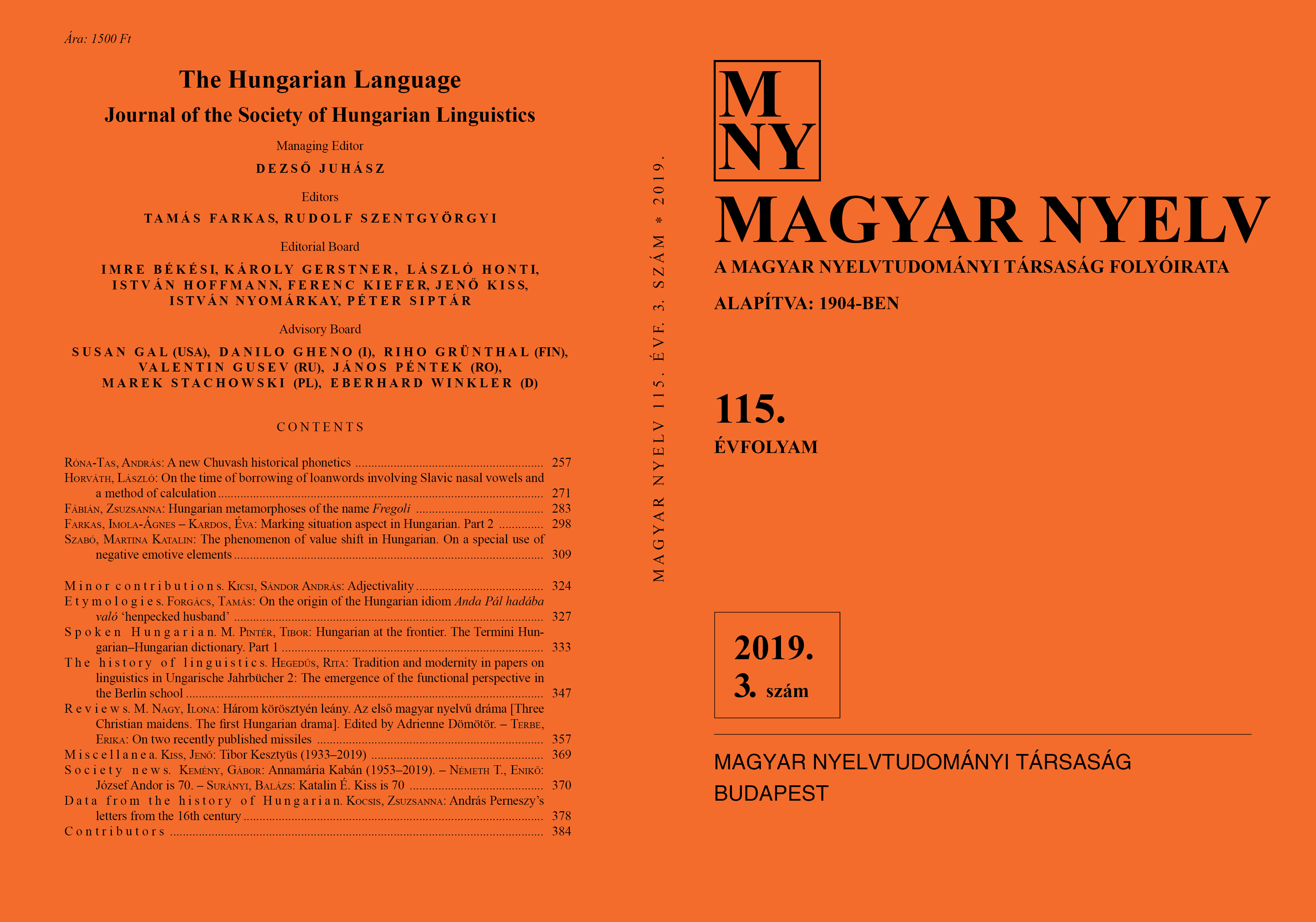Marking situation aspect in Hungarian
Part 2.
DOI:
https://doi.org/10.18349/MagyarNyelv.2019.3.298Keywords:
situation aspect, particle, resultative predicate, pseudo-object, created and consumed object, telicity, event maximalization, HungarianAbstract
In the present paper, we aim to explore three different telicity-marking strategies in Hungarian. In terms of these strategies, telic interpretations can arise (i) through event-maximalization encoded in verbal particles and resultative phrases of change of state or location, (ii) through pseudo-objects such as egyet ‘one.acc’, (egy) jót ‘(one) good.acc’, jókat ‘good.pl.acc’, (egy) nagyot ‘(one) big. acc’, nagyokat ‘big. pl.acc’, hatalmasat ‘huge. acc’, etc., and (iii) through bounded objects of creation and consumption predicates. We show that although telicity is always a direct consequence of the fact that the verbal predicate is quantized, it can arise both in the presence of maximalization over events (cf. verbal particles and resultative phrases) and in its absence (cf. pseudo-objects and created/consumed objects). Based on these three different strategies in the expression of telicity, we conclude that the class of telic predicates is clearly heterogeneous in Hungarian.
Downloads
Published
Issue
Section
License
Copyright (c) 2024 Imola-Ágnes Farkas, Éva Kardos

This work is licensed under a Creative Commons Attribution-NonCommercial-NoDerivatives 4.0 International License.
Magyar Nyelv is a Diamond Open Access periodical. Documents can be freely downloaded and duplicated in an electronic format, and can be used unchanged and with due reference to the original source. Such use must not serve commercial purposes. In the case of any form of dissemination and use, Hungarian Copyright Act LXXVI/1999 and related laws are to be observed. The electronic version of the journal is subject to the regulations of CC BY-NC-ND (Creative Commons – Attribution-NonCommercial-NoDerivatives).
The journal permits its authors, at no cost and without any temporal limitation, to make pre-print copies of their manuscripts publicly available via email or in their own homepage or that of their institution, or in either closed or free-for-all repositories of their institutions/universities, or other non-profit websites, in the form accepted by the journal editor for publication and even containing amendments on the basis of reviewers’ comments. When the authors publicize their papers in this manner, they have to warn their readers that the manuscript at hand is not the final published version of the work. Once the paper has been published in a printed or online form, the authors are allowed (and advised) to use that (post-print) version for the above purposes. In that case, they have to indicate the exact location and other data of the journal publication. The authors retain the copyright of their papers; however, in the case of an occasional secondary publication, the bibliographical data of the first publication have to be included.



